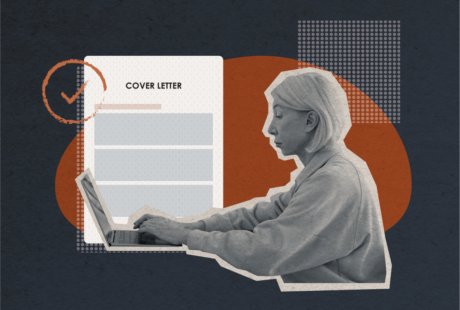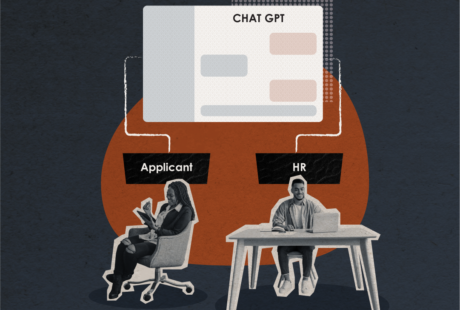Related:
Can I Email My Job Interview? The Death of In-Person Communication
Denise Goldbeck will be speaking at our Public Speaking Mastery workshop with Ece Ozer on February 1st here in Vancouver. If you’d like to hear more of her fascinating insights, register your interest here.
Going beyond memes & simplified talking points to examine the limitations of Zoom, the cost of work-from-home, & the nature of communication
Is remote work technology ruining our conversations, defying our nature, reducing our empathy, making us anxious, and robbing our lives of meaning? Zoom and other virtual platforms purport to provide collaboration without physical congregation, but experts warn that they have limitations and consequences. What’s lost when we work remotely?
Remote Work Costs More Than Spontaneous Interaction
Since remote work became prevalent in 2020, opponents have been trying to poke holes in the practice. Argument A has been the idea that our lack of physical presence would cost us the opportunity to spontaneously bounce ideas off of one another in real time. The idea has been simplified, refuted, debated to death, and has resulted in a stalemate. We wanted to go beyond this dumbed-down bluster and get to some meatier matter, so we consulted Denise Goldbeck, a Phd Candidate in organizational leadership, an expert in developmental psychology and a Registered Clinical Counsellor (and wife of Goldbeck Recruiting President Henry Goldbeck).
The Importance of Body Language in Conversation
Humans have evolved over tens of thousands of years to become efficient communication machines. Certainly speaking and listening lie at the core of our conversations, but that’s just the beginning.
“Our bodies provide us with myriad pieces of data that enhance and add clarity to our communications,” says Goldbeck. “Eye gaze, the dilation of the pupil, tone of voice, the constriction of the throat, the color in a person’s face, their body language, and the way they hold themselves all have meaning.”1
Goldbeck speaks of Transition Relevance Places, the points in conversation where speakers shift topics, signal a change, or manage the flow. TRPs serve as a bridge between different ideas, ensuring smooth transitions and coherence in communication. Although they’re largely taken for granted, our bodily cues play a key role in signaling TRPs. Do these exist in a digital world? Or are important thoughts and ideas being ignored as digital delays cause us to interrupt one another, or hesitate to interject?
Do the digital delays cause us to interrupt one another? It is more that the digitalization of communication hijacks our interruption behaviours altogether. We fail to interrupt at times when in face to face interaction we would not need to unmute and interject – and we interrupt when internet signals lag. The natural overlapping in talk that signals strong agreement is weeded out in zoom interactions lessening confidence in interlocutors and even leads to passive aggressive behaviour.

Are Zoom Conversations Productive? A Look at Zoom Fatigue
Our conversation shifts to the limitations of Zoom conversations, ironic since that’s exactly the medium we’re using to facilitate the interview.
“You’ll notice that we’re being very careful not to interrupt one another right now,” says Goldbeck. Like most video calls, our conversation is littered with phrases like “sorry” or “your turn”.
“If we were in the room together there would be more overlaps,” notes Goldbeck. “That’s where the juice is!”
What Goldbeck is suggesting is that, when it comes to conversation, the medium is part of the message. By failing to physically come together, we’re not utilizing our full conversational equipment. It’s discussion with handcuffs.
“I’ll find myself wanting to comment, but not wanting to interrupt,” concurs Colin Rose, President of Rose Communications, who is also tired of virtual meetings.2 “I’ll often say something such as ‘interesting’, in hopes that the speaker will take note and circle back to me later. It’s like throwing a flag in football, but allowing the play to continue.”
As most readers will know firsthand, the whole practice can be exhausting, which is why the phrase ‘Zoom fatigue’ has entered the lexicon.
“If you don’t get those TRPs in conversation, you’re really not alive,” says Goldbeck.
Is Working from Home Causing Anxiety?
According to Goldbeck, exclusive work from home arrangements not only have a cost for the company, but for the employees as well.
“Social interaction is important to us,” she says. “We want meaning in our lives, but many of us are experiencing a large gap in our ability to create it.”
In a previous article, Goldbeck helped us understand the damaging effects that digital devices are having upon the development of young people, with reduced communication skills and increased social anxiety the unfortunate results. Goldbeck talks about positive and negative face needs, with the former referencing the need to feel included (Happy Birthday!) and the latter describing a desire to be left alone (I’m busy). She explains that social media meets both needs at the same time, creating a vicious cycle where the appeal of going out to socialize is diminished, leading to a lapse in social skills and, thus, more social anxiety.
“A text message or email doesn’t intrude upon us,” explains Goldbeck. “They require no immediate response. Going into an office means bumping up against people and having social interactions. If your skills are rusty, you’re going to be resistant to it.”
Does Working From Home Allow us to ‘Get in the Zone’?
When athletes retire, it’s not just the thrill of victory they miss, but the aesthetic details that surround the game. The fresh cut grass of a baseball outfield or the echoes of a slapshot bouncing around the arena. These are the elements that cause the synapses to fire. Can the same be said for offices?
Goldbeck recalls recently watching a movie that featured a busy office scene.
“Papers were shuffling, people were bumping into one another, almost spilling coffee and so on,” she says. “I suddenly felt hungry for that kind of life again, where people are collaborating and sharing ideas.”
Before Rose started his communications agency, he was motivated by similar details.
“I always pictured myself arriving at work, Starbucks in hand, entering the office, and getting down to work,” he explains. “The same feeling can’t quite be replicated from home, no matter how good your webcam is.”
Making Intelligent Decisions About Working From Home
As the work world deals with this latest paradigm shift, there is no one-size fits all approach. Goldbeck Recruiting’s Senior Recruiters acknowledge that any company who insists upon a full-time in-office work schedule will face an uphill climb with regards to recruitment.
Companies should simply be aware that each work model has its own benefits and drawbacks. There is an idea that everybody can work from home, accomplishing just like before, with no detriment to person or productivity. If that seems too good to be true, it is.
Ultimately, it’s a choice and balance is often best. At Goldbeck Recruiting, we’ve even been asked if a job interview could be conducted over email. (Short answer: no!)
The debate over remote work vs. office work is unlikely to go away any time soon. When assessing your company’s ideal arrangement, be sure to go beyond simple memes and clickbait op-eds and consider the full picture. Researching the plans being used by your competitors will show you what is and is not working. Staff surveys will help you understand the opinions of these important stakeholders and help you get it right. Your next million-dollar idea, as well as the mental health of your staff, could depend upon it.
Cited Sources
1 Direct communication with Denise Goldbeck
2 Direct communication with Colin Rose




